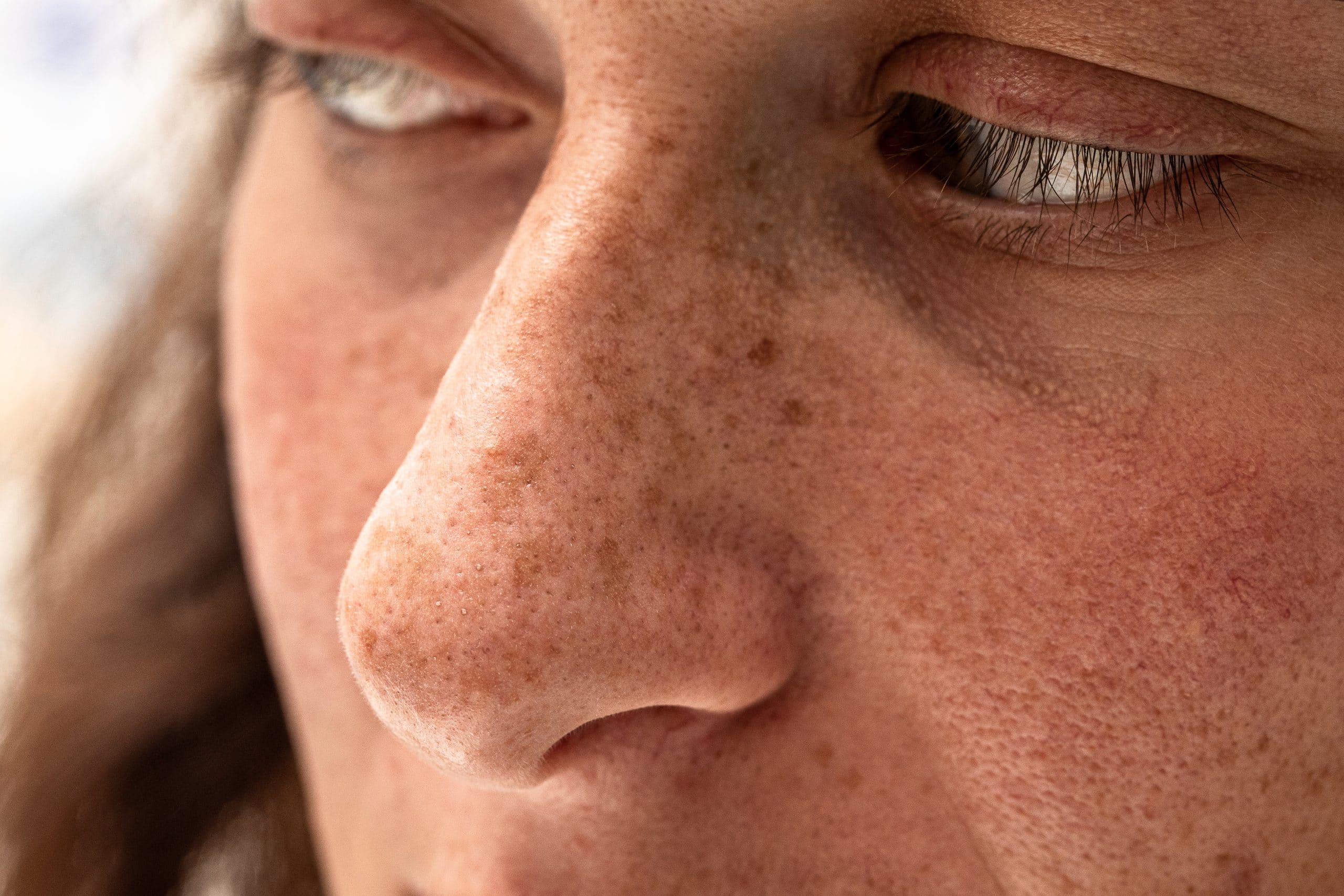Spending time in the sun is important for your health and well-being. But every time you step outside without sun protection, the sun's ultraviolet (UV) rays can damage your skin. When this damage adds up over time, it can result in visible signs on your face and body. If you think you have sun-damaged skin, don't worry. It's never too late to learn how to repair sun-damaged skin and uncover your healthiest, most radiant complexion.
Understanding Sun-Damaged Skin
Getting too much UV light—whether from the sun or a tanning bed—harms your skin. It damages the DNA in your skin cells, which can lead to skin cancer, and causes visible signs of premature aging. Getting a sunburn or tan is the first indicator of sun damage. Each time UV rays injure your skin, that damage adds up and leads to different telltale signs.
Signs of Sun-Damaged Skin
Sun damage—also called photoaging—can show up in different ways on the skin. Over time, it may lead to:
- Wrinkles
- Loose skin
- Dark spots (sunspots)
- A blotchy complexion (caused in part by enlarged blood vessels)
As sun damage builds, it can eventually lead to skin cancer.
How to Repair Sun-Damaged Skin in 5 Steps
The good news is that no matter where you are in your healthy skin journey, fighting the signs of sun damage doesn't have to be hard. Incorporate these simple steps into your daily routine to protect against and reduce UV damage.
1. Apply Sunscreen Daily
The best treatment for sun-damaged skin is prevention. No matter how much sun exposure you've accumulated so far, it's never too late to start wearing sunscreen or building healthier sun care habits. Look for a sunscreen that blocks harmful UV rays and restores sun-damaged skin at the same time, like EltaMD UV Restore Broad-Spectrum SPF 40. This formula contains Ginger Root Extract and antioxidants to promote a healthy complexion and minimize dark spots and fine lines.
2. Keep Skin Hydrated
Over time, sun-damaged skin has a harder time holding in moisture, leading to dry skin and a damaged skin barrier. So, moisturizing your skin at least twice a day is a must. Try a formula like EltaMD Skin Recovery Light Moisturizer, which contains Sodium Hyaluronate—a stronger version of Hyaluronic Acid—to keep skin supple, smooth, and hydrated.
3. Incorporate Vitamins into Your Routine
Vitamins B, C, and E can help reduce signs of photodamage and improve your overall complexion. In addition to vitamins, EltaMD Skin Recovery Serum contains Amino Acids and Tigergrass Extract to help restore skin barrier function. Niacinamide, a type of Vitamin B, has also been shown to reduce fine lines and wrinkles and even out a blotchy complexion. End the day strong with EltaMD PM Therapy Facial Moisturizer before bed to incorporate this potent anti-inflammatory into your routine.
4. Use a Retinol Cream Daily
Many people consider Retinol or other Retinoid creams to be the best treatment for sun-damaged skin, and it's certainly up there. Retinoids help promote collagen production and exfoliate your skin, which leads to improved skin texture and fewer visible wrinkles. They also even out skin tone and help fade dark spots. Start with a lower-strength Retinol cream and work your way up to a stronger one as your skin adjusts to this powerful ingredient.
5. Visit Your Dermatologist
When it comes to repairing sun-damaged skin, your Derm can lend a hand with various in-office treatments. Injectables, like Botox and other fillers, are great at reducing fine lines and wrinkles. If you want to avoid needles, chemical peels and laser resurfacing can also repair photodamage—including sunspots, loose skin, and a blotchy complexion.
No matter how much sun exposure you've had in the past, start repairing the signs of photodamage today. Your skin will thank you. Incorporating small changes into your daily routine is the first step to promoting healthy skin and uncovering your most beautiful complexion.

